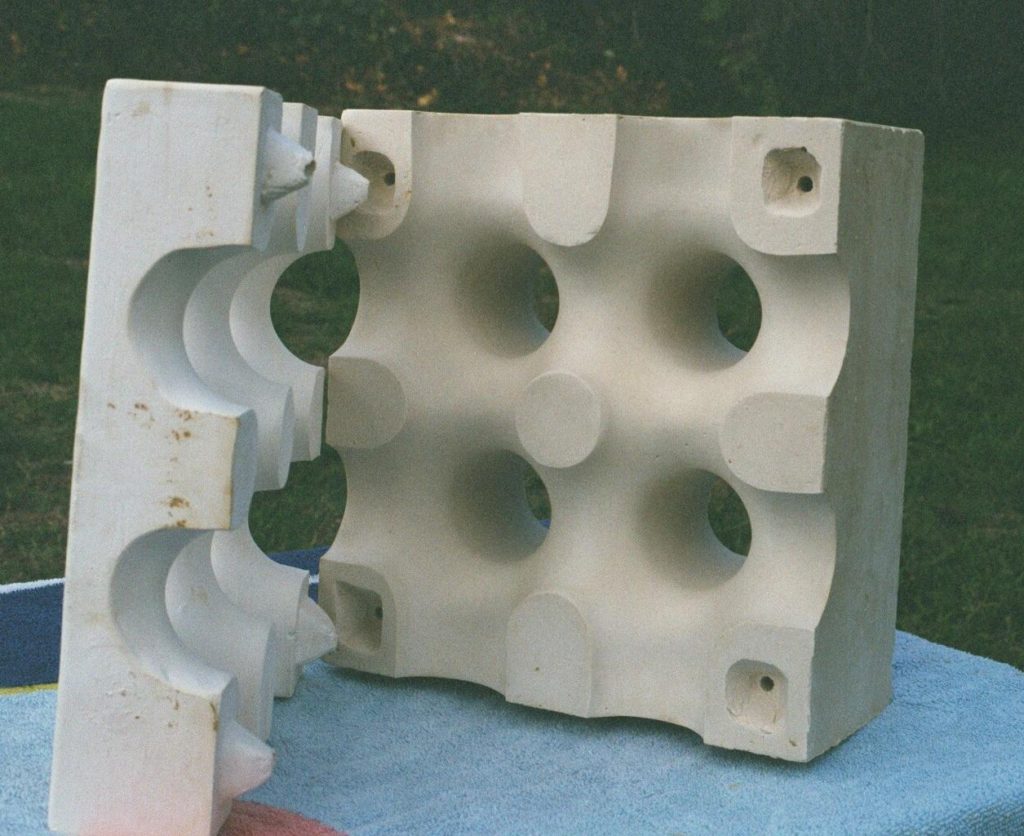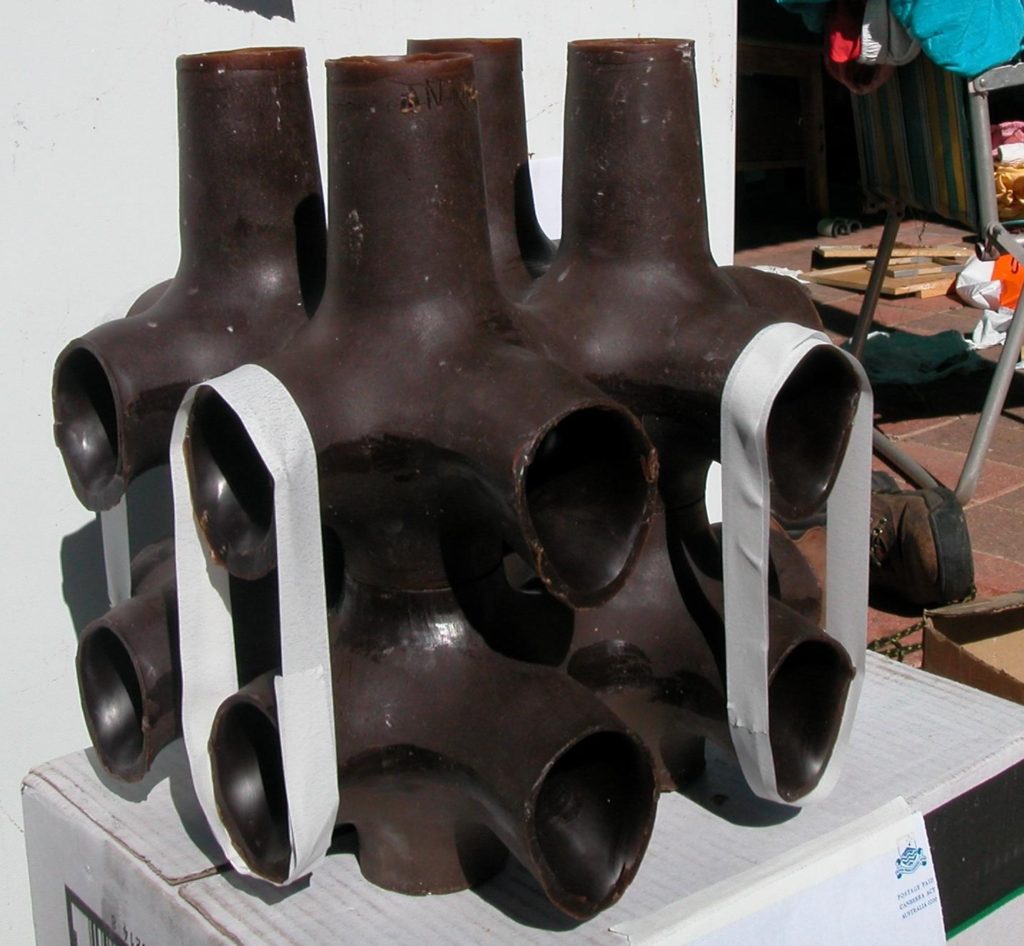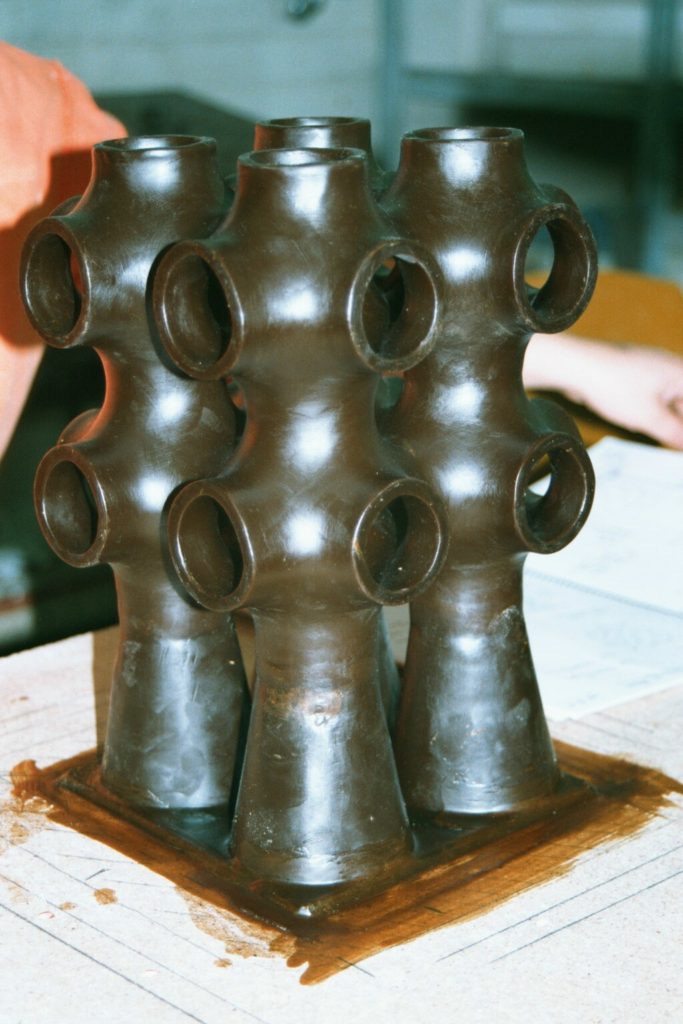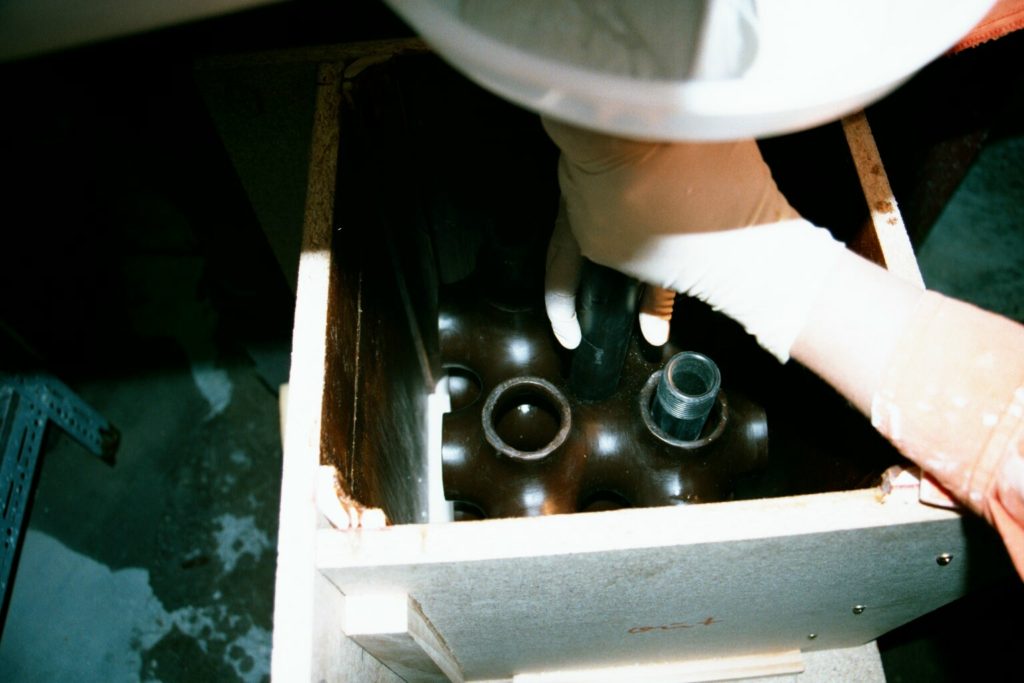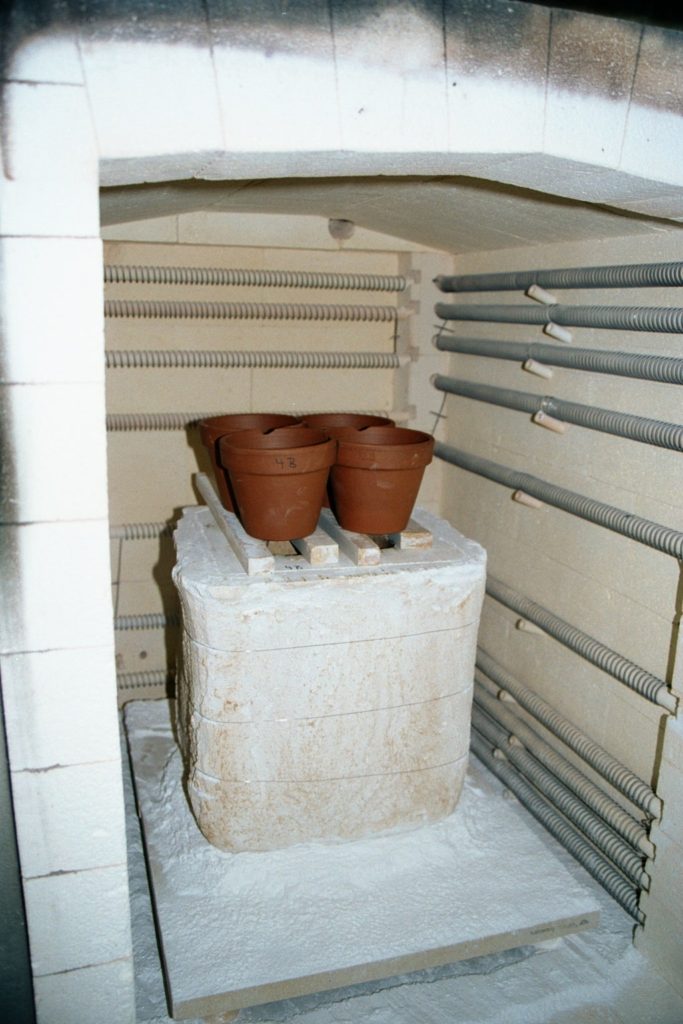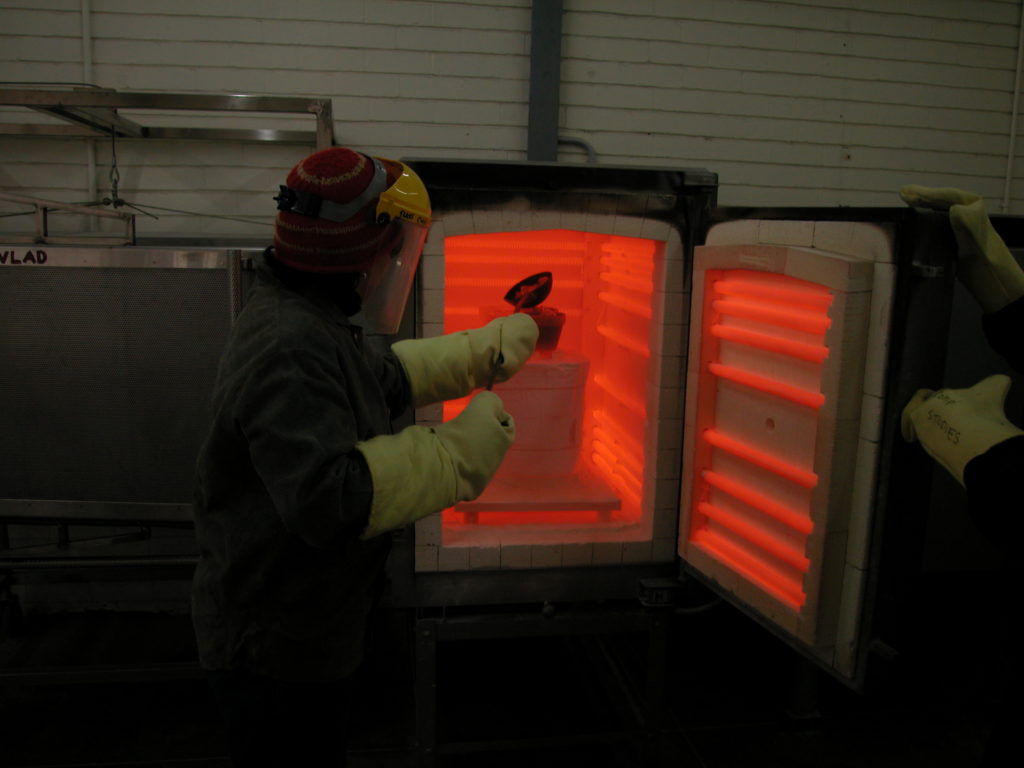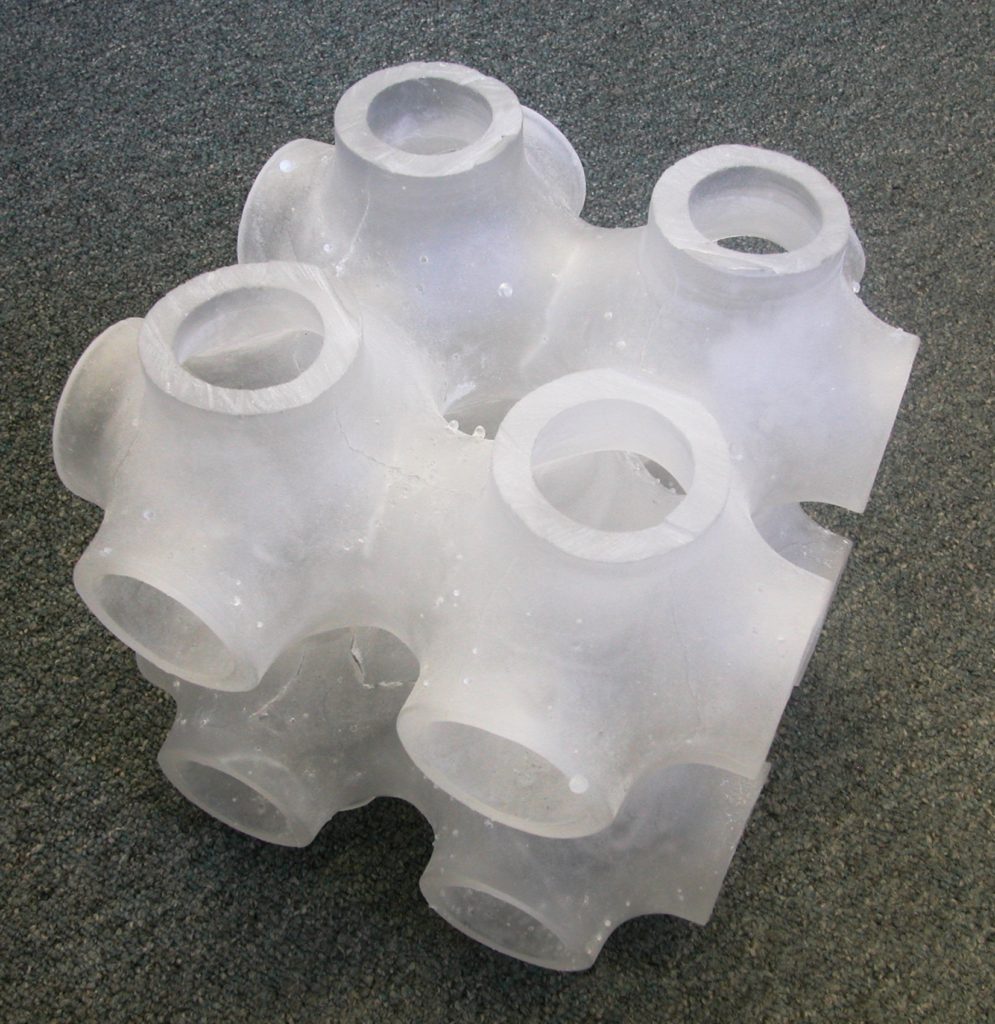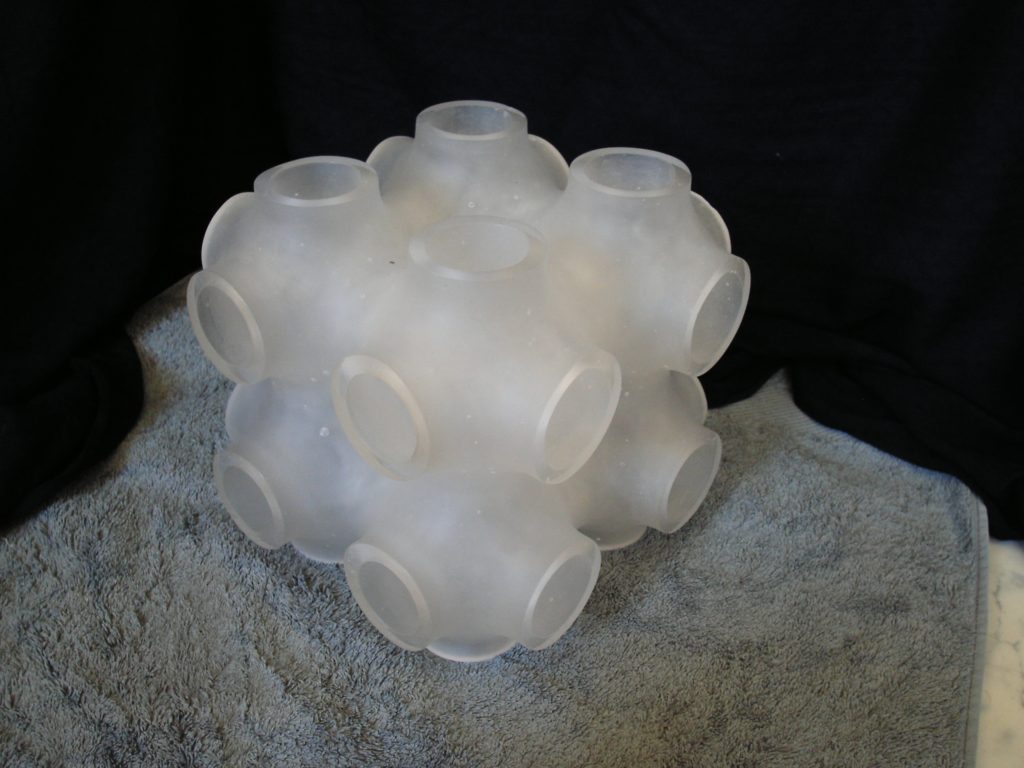Entangled yet divided: A glass model of Schwarz’ Primitive surface

Back in 2001, a profound discussion was held in ANU’s beautiful Unihouse gardens about how useful a bicontinuous bottle, a bottle internally subdivided by a minimal surface into two domains, could be. One channel for each of your favourite drinks, or one for olive oil and one for vinegar.
Nowadays, one would turn to 3D printing with tranparent resins, and make that bottle in no time. But back then, with 3D printing nowhere near as widely available, the first point of contact was the Glass workshop of the ANU School of Art. It turned out quickly that making a bicontinuous glass bottle would not be possible, but maybe a larger-scale version, like a bicontinuous aquarium.
The final outcome, after two years of learning about glass casting, glass processing, wax models and related stuff, was the piece below, about 20cm in length in all three directions:
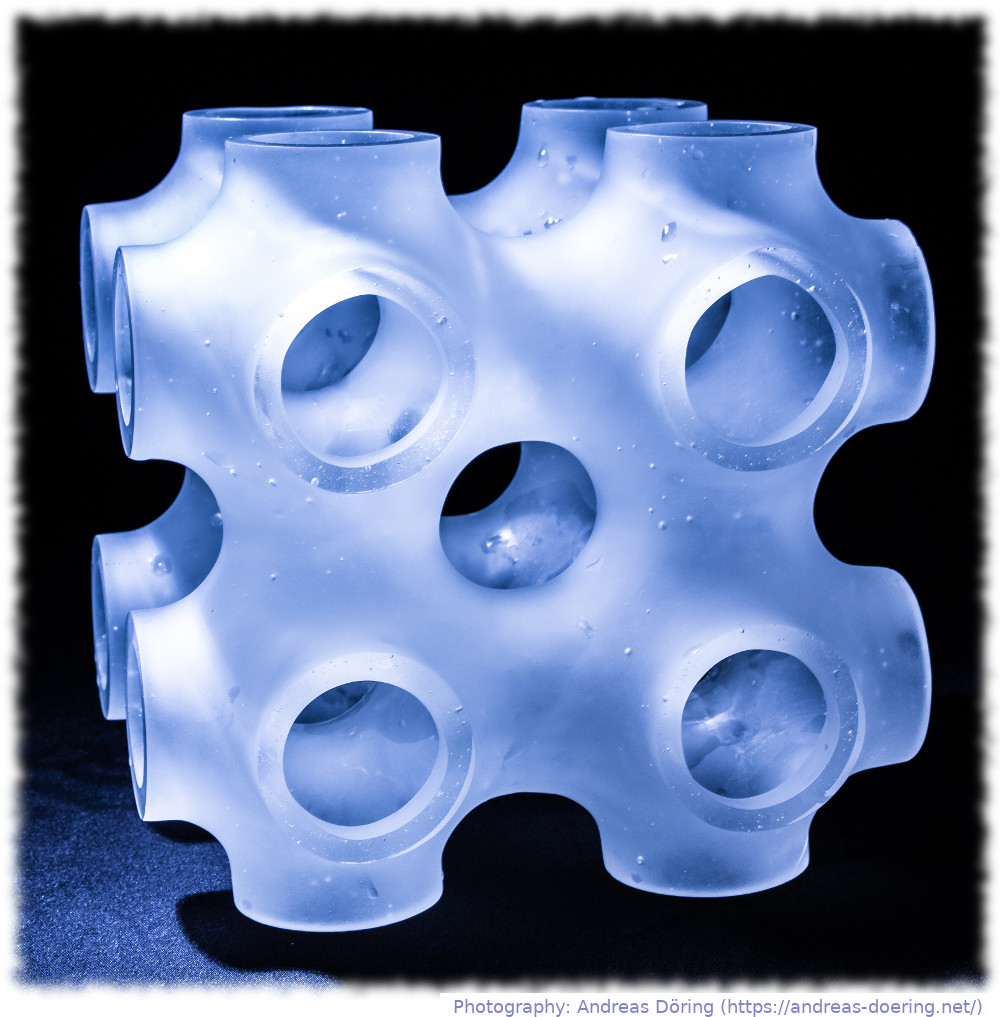
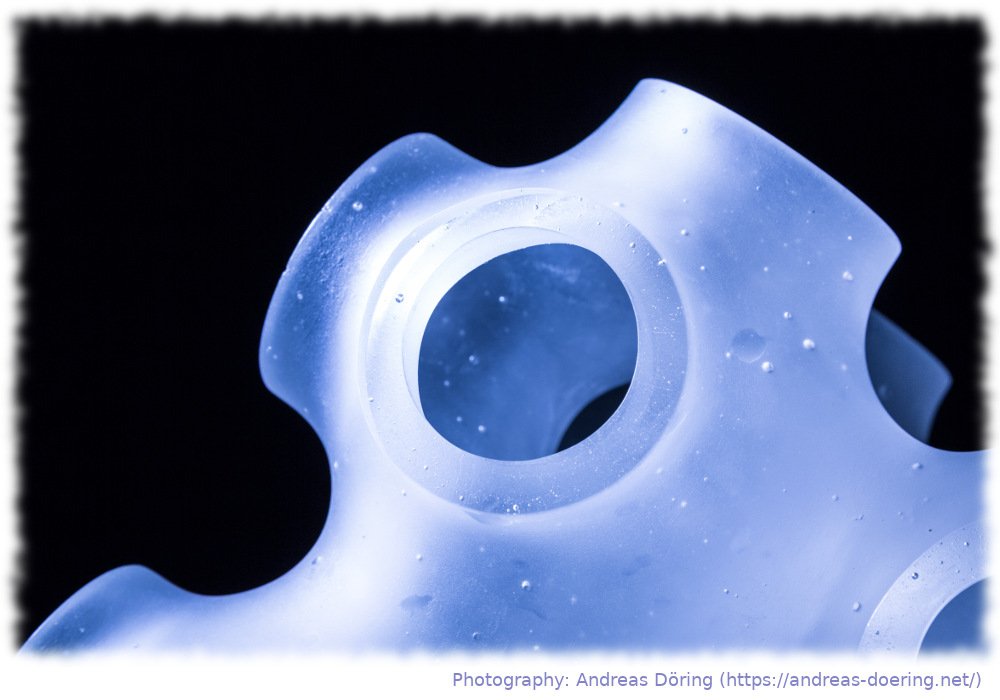
Many thanks to Andreas Döring for the photography shown above. Check out his shop here! The original piece is clear (slightly white) glass; the blue color above is a lighting effect.
The making of the Primitive Glass Cast
The route to the piece shown above was a long one, that involved me taking a complementary glass course at the School of Art of the ANU, every monday for the better of two years. That was an exceptionally fun and fulfilling activity, and one that I much like remembering. I am very grateful to all those at the ANU and elsewere, who back in 2001-3 helped me along.
(Click on the image to start as slide show and/or see caption)

